Discover our range of MacBook Pro – powerful, professional and built to last. New and refurbished models, carefully tested, with 1-year warranty and great prices at Revendo Switzerland.
-
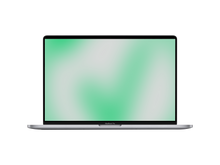
Apple Macbook Pro 16" Touch Bar Space Gray, 2.6 GHz Core i7, 512 GB SSD, 16 GB RAM, AMD Radeon Pro 5300M, Late 2019, CH
Regular price From 580 CHFSale price From 580 CHF Regular priceUnit price per0 CHF -
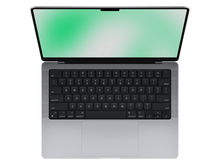
Apple Macbook Pro 14" Space Grey, M1 Pro, 10-Core CPU & 16-Core GPU, 512 GB SSD, 32 GB RAM, Late 2021, CH
Regular price From 1'285 CHFSale price From 1'285 CHF Regular priceUnit price per0 CHF -
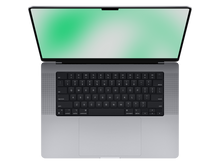
Apple MacBook Pro 16" Space Gray, M1 Pro, 10-Core CPU and 16-Core GPU, 512 GB SSD, 16 GB RAM, Late 2021, CH
Regular price From 1'101 CHFSale price From 1'101 CHF Regular priceUnit price per0 CHF -

Apple Macbook Pro 16" Touch Bar Silver, 2.6 GHz Core i7, 512 GB SSD, 16 GB RAM, AMD Radeon Pro 5300M, Late 2019, CH
Regular price From 533 CHFSale price From 533 CHF Regular priceUnit price per0 CHF -

Apple Macbook Pro 15" Touch Bar Silver, 2.3 GHz Core i9, 512 GB SSD, 16 GB RAM, Radeon Pro 560X, Mid 2019, CH
Regular price From 654 CHFSale price From 654 CHF Regular priceUnit price per0 CHF -
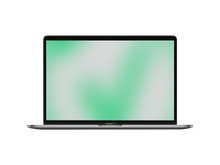
Apple Macbook Pro 15" Touch Bar Space Gray, 2.6 GHz Core i7, 512 GB SSD, 16 GB RAM, Radeon Pro 555X, Mid 2019, CH
Regular price From 615 CHFSale price From 615 CHF Regular priceUnit price per0 CHF -

Apple Macbook Pro 16" Touch Bar Space Grey, 2.4 GHz Core i9, 1 TB SSD, 64 GB RAM, AMD Radeon Pro 5500M, Late 2019, CH
Regular price From 881 CHFSale price From 881 CHF Regular priceUnit price per0 CHF -

Apple Macbook Pro 16" Touch Bar Space Grey, 2.4 GHz Core i9, 1 TB SSD, 64 GB RAM, AMD Radeon Pro 5500M, Late 2019, CH
Regular price From 936 CHFSale price From 936 CHF Regular priceUnit price per0 CHF -

Apple Macbook Pro 13" Silver, M1, 8‑Core CPU & 8‑Core GPU, 1 TB SSD, 8 GB RAM, Late 2020, CH
Regular price From 624 CHFSale price From 624 CHF Regular priceUnit price per0 CHF -

Apple Macbook Pro 13" Space Grey, M1, 8‑Core CPU & 8‑Core GPU, 2 TB SSD, 16 GB RAM, Late 2020, CH
Regular price From 958 CHFSale price From 958 CHF Regular priceUnit price per0 CHF -
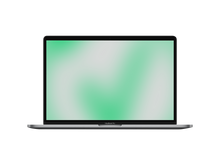
Apple Macbook Pro 13" Touch Bar Space Grey, 2.3 GHz Core i5, 512 GB SSD, 16 GB RAM, Intel Iris Plus Graphics 655, Mid 2018, CH
Regular price From 400 CHFSale price From 400 CHF Regular priceUnit price per0 CHF -
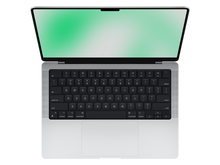
Apple Macbook Pro 14" Silver, M1 Pro, 10-Core CPU & 14-Core GPU, 4 TB SSD, 16 GB RAM, Late 2021, CH
Regular price From 1'575 CHFSale price From 1'575 CHF Regular priceUnit price per0 CHF -

Apple Macbook Pro 14" Silver, M1 Pro, 10-Core CPU & 16-Core GPU, 1 TB SSD, 16 GB RAM, Late 2021, CH
Regular price From 1'239 CHFSale price From 1'239 CHF Regular priceUnit price per0 CHF -

Apple Macbook Pro 14" Silver, M1 Pro, 10-Core CPU & 16-Core GPU, 2 TB SSD, 32 GB RAM, Late 2021, CH
Regular price From 1'580 CHFSale price From 1'580 CHF Regular priceUnit price per0 CHF -

Apple Macbook Pro 14" Silver, M1 Pro, 10-Core CPU & 16-Core GPU, 512 GB SSD, 16 GB RAM, Late 2021, CH
Regular price From 1'226 CHFSale price From 1'226 CHF Regular priceUnit price per0 CHF -

Apple MacBook Pro 14" Silber, M5, 10-Core CPU und 10-Core GPU, 1 TB, 16 GB RAM, Late 2025,
Regular price From 1'665 CHFSale price From 1'665 CHF Regular priceUnit price per0 CHF -

Apple Macbook Pro 14" Space Grey, M1 Max, 10-Core CPU & 24-Core GPU, 4 TB SSD, 32 GB RAM, Late 2021, CH
Regular price From 2'061 CHFSale price From 2'061 CHF Regular priceUnit price per0 CHF -

Apple MacBook Pro 14" Space Gray, M1 Max, 10-Core CPU and 32-Core GPU, 1 TB, 32 GB RAM, Late 2021, US
Regular price From 1'585 CHFSale price From 1'585 CHF Regular priceUnit price per0 CHF -
 Sold out
Sold outApple Macbook Pro 14" Space Grey, M1 Max, 10-Core CPU & 32-Core GPU, 2 TB SSD, 32 GB RAM, Late 2021, CH
Regular price From 1'482 CHFSale price From 1'482 CHF Regular priceUnit price per0 CHF -

Apple Macbook Pro 14" Space Grey, M1 Max, 10-Core CPU & 32-Core GPU, 8 TB SSD, 64 GB RAM, Late 2021, CH
Regular price From 2'382 CHFSale price From 2'382 CHF Regular priceUnit price per0 CHF -

Apple Macbook Pro 14" Space Grey, M1 Pro, 10-Core CPU & 14-Core GPU, 512 GB SSD, 32 GB RAM, Late 2021, CH
Regular price From 1'262 CHFSale price From 1'262 CHF Regular priceUnit price per0 CHF -

Apple Macbook Pro 15" Touch Bar Silver, 2.2 GHz Core i7, 512 GB SSD, 16 GB RAM, Radeon Pro 555X, Mid 2018, CH
Regular price From 487 CHFSale price From 487 CHF Regular priceUnit price per0 CHF -

Apple Macbook Pro 15" Touch Bar Silver, 2.6 GHz Core i7, 256 GB SSD, 16 GB RAM, Intel HD Graphics 530 + AMD Radeon Pro 450, Late 2016, CH
Regular price From 481 CHFSale price From 481 CHF Regular priceUnit price per0 CHF -

Apple MacBook Pro 15" Touch Bar Silver, 2.7 GHz Core i7, 1 TB SSD, 16 GB RAM, Intel HD Graphics 530 + AMD Radeon Pro 455, Late 2016, US
Regular price From 495 CHFSale price From 495 CHF Regular priceUnit price per0 CHF -

Apple Macbook Pro 15" Touch Bar Silver, 2.7 GHz Core i7, 512 GB SSD, 16 GB RAM, Intel HD Graphics 530 + AMD Radeon Pro 455, Late 2016, CH
Regular price From 493 CHFSale price From 493 CHF Regular priceUnit price per0 CHF -

Apple Macbook Pro 15" Touch Bar Silver, 2.8 GHz Core i7, 512 GB SSD, 16 GB RAM, Radeon Pro 555, Mid 2017, CH
Regular price From 464 CHFSale price From 464 CHF Regular priceUnit price per0 CHF -

Apple Macbook Pro 15" Touch Bar Silver, 3.1 GHz Core i7, 2 TB SSD, 16 GB RAM, Radeon Pro 560, Mid 2017, CH
Regular price From 584 CHFSale price From 584 CHF Regular priceUnit price per0 CHF -
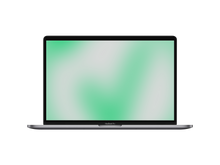
Apple Macbook Pro 15" Touch Bar Space Grey, 2.2 GHz Core i7, 1 TB SSD, 16 GB RAM, Radeon Pro 555X, Mid 2018, CH
Regular price From 552 CHFSale price From 552 CHF Regular priceUnit price per0 CHF -

Apple Macbook Pro 15" Touch Bar Space Grey, 2.6 GHz Core i7, 1 TB SSD, 32 GB RAM, Radeon Pro Vega 20, Mid 2018, CH
Regular price From 555 CHFSale price From 555 CHF Regular priceUnit price per0 CHF -

Apple MacBook Pro 15" Touch Bar Space Gray, 2.6 GHz Core i7, 512 GB, 16 GB RAM, Intel HD Graphics 530 + AMD Radeon Pro 460, Late 2016, CH
Regular price From 543 CHFSale price From 543 CHF Regular priceUnit price per0 CHF
FAQ MacBook Pro
Are you thinking about buying MacBook Pro but still unsure? Let’s take a look together at the key benefits and things to consider before you buy.












